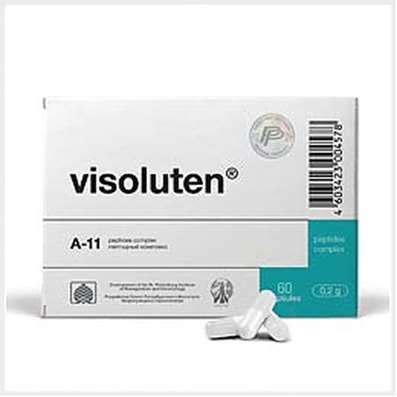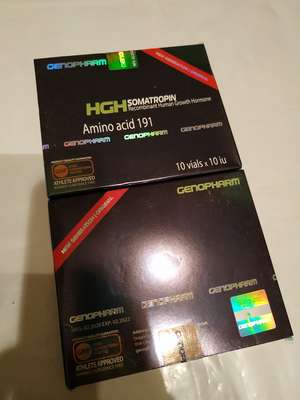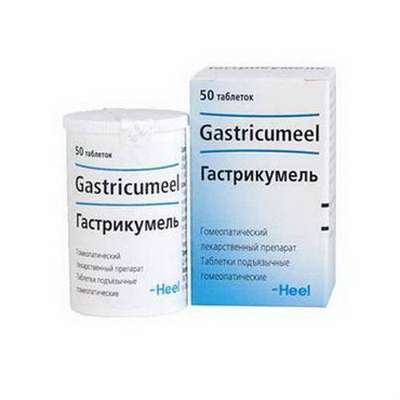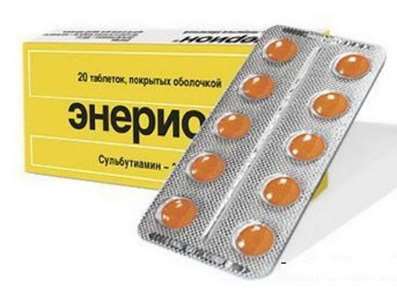Instruction for use: Olodaterol (Olodaterolum)
I want this, give me price
Chemical name: 6-Hydroxy-8 - [(1R) -1-hydroxy-2 - [[1- (4-methoxyphenyl) -2-methylpropan-2-yl] amino] ethyl] -4H-1,4-benzoxazin-3- one (and hydrochloride)
Pharmacotherapeutic group:
Beta-adrenergic agonist
The nosological classification (ICD-10)
J42 Chronic bronchitis, unspecified
recurrent bronchitis, Bronchitis asthma, wheeze bronchitis, chronic Bronchitis, Inflammatory airways disease, bronchi disease, Qatar smoker, Cough in inflammatory diseases of the lung and bronchus, Exacerbation of Chronic Bronchitis, Chronic bronchitis, Chronic obstructive pulmonary disease, Chronical bronchitis, Chronic bronchitis smokers, Chronic spastic bronchitis, allergic Bronchitis
J43 Emphysema
Interstitial emphysema, Emphysema, Chronic lung disease, Chronic obstructive pulmonary disease, Obstructive pulmonary emphysema, Chronic pulmonary emphysema, Chronic obstructive pulmonary emphysema
J44 Other chronic obstructive pulmonary disease
Allergic bronchitis, Bronchitis asthma, Asthmatic bronchitis, wheeze bronchitis, Bronchitis is an obstructive, bronchi disease, Shortness of sputum in acute and chronic respiratory diseases, Cough in inflammatory diseases of the lung and bronchus, Reversible airflow obstruction, Reversible obstructive airway disease, Obstructive bronchitis disease, Obstructive lung disease, Obstructive bronchitis, Spastic bronchitis, Chronic lung disease, Chronic nonspecific lung diseases, Chronic obstructive pulmonary disease, Chronic obstructive bronchitis, Chronic obstructive airway disease, Chronic obstructive pulmonary disease, Restrictive lung pathology
J44.9 Chronic obstructive pulmonary disease, unspecified
Obstructive pulmonary diseases, Bronchial obstruction, bronchial obstruction, Exacerbation of chronic obstructive pulmonary disease, reversible airflow obstruction, Reversible airway obstruction, panbronchiolitis, Panbronhit, COPD, Chronic pulmonary infection, Chronic infection of the lower respiratory tract, Chronic obstructive pulmonary disease, Chronic obstructive pneumonia, Chronic lung disease, Chronic obstructive pulmonary disease, Chronic bronchopulmonary disease, Chronic broncho-pulmonary diseases, Airway obstruction
CAS Cade 868049-49-4
Characteristics
Bronchodilators, beta2-agonists long-acting.
Olodaterol hydrochloride - white or almost white powder, it is soluble in water, slightly soluble in ethanol.
Pharmacology
Pharmacological effect
bronchodilatory, beta2-adrenomimeticheskoe.
pharmacodynamics
Olodaterol has high affinity and selectivity for beta2-adrenergic receptors. Activation of beta2-adrenoceptor airway leading to stimulation of intracellular adenylate cyclase, which is involved in cAMP synthesis. Increased cyclic AMP levels cause bronchodilation by relaxing the smooth muscle in the airways. Olodaterol agonist is a selective beta2-adrenoceptor prolonged action, characterized by rapid onset and prolonged retention effect for at least 24 hours. Beta2-adrenergic receptors are present not only in the airway smooth muscle, but also on the surface of many other cells, including in the epithelium and endothelium of the lungs and heart. The exact function of beta2-receptors in the heart is not known, but their presence indicates the possibility of effects on the heart, even highly selective beta2-adrenergic agonists.
It is found that a single application of olodaterola at doses of 10, 20, 30 and 50 mg resulted in 20 minutes-2 hours to increase (compared to placebo) QT interval (Po from baseline), which with increasing dose increased from an average of 1.6 ms (olodaterol at 10 ug) to 6.5 ms (olodaterol dose of 50 micrograms).
There were no any tendencies to change in the average values of the heart rate or frequency of extrasystoles and type depending on the dose olodaterola (5 or 10 mg) or from time to time.
Electrophysiology. Influence olodaterola on interval QT / QTc on ECG was studied in 24 healthy male and female volunteers in a double-blind, randomized, placebo- and active-controlled (moxifloxacin) study at single doses olodaterola 10, 20, 30 and 50 micrograms. dose-dependent elongation QTcI interval was observed (QT interval corrected in accordance with the method of individual correction). The maximum values (one-sided 95% upper confidence bound) differences QTcI from placebo after baseline correction were 2.5 (5.6) ms, 6.1 (9.2) ms, 7.5 (10.7) ms and 8, 5 (11.6) olodaterola ms at doses of 10, 20, 30 and 50 micrograms, respectively.
Effect olodaterola at doses of 5 and 10 ug of heart rate and heart rate was assessed by 24-hour continuous ECG (Holter) in the subgroup of patients in the 772 48-week, placebo-controlled phase 3 trials was not observed any change in the trends average heart rate values, or the number and type of extrasystoles depending on dose and time. There were no significant changes in the parameters of extrasystoles at the end of treatment compared with baseline for olodaterola doses of 5 mg, 10 mg and placebo.
Studies have shown that the use olodaterola a dose of 5 mg 1 time per day in the morning resulted in a significant improvement (p <0.0001) in lung function within 5 minutes after the first dose (mean increase in forced expiratory volume in 1 second (FEV1) 0.13 l was compared with the initial value before treatment 1.18 l). A significant improvement in lung function was maintained for 24 hours, the mean increase in FEV1 was AUC0-3 0.162 L compared with placebo, p <0.0001; mean increases basal (after 24 h) was 0.071 l FEV1 compared with placebo, p <0.0001.
In two studies, exercise tolerance was found that olodaterol compared with placebo increases the time to onset of fatigue (respectively 14% and p = 0.0002 11.8% p = 0.0018). Olodaterol compared to placebo as well reducing lung hyperinflation (pulmonary functional residual capacity), which leads to an increase in inspiratory capacity at rest and during the exercise.
Pharmacokinetics
Pharmacokinetics olodaterol is linear. In single-dose inhalation application, is from 5 to 70 mg and after repeated use olodaterol 1 once a day at doses ranging from 2 to 20 g, systemic exposure was increased in proportion to the increase in dose. After repeated daily use olodaterola equilibrium state was reached within 8 days, and the impact of increased 1.8 times as compared with a single dose.
Suction. Olodaterol rapidly absorbed, Cmax in plasma is usually achieved within 10-20 minutes after inhalation. In healthy volunteers after inhalation olodaterol absolute bioavailability was about 30%, whereas the absolute bioavailability olodaterol after oral administration as a solution was <1%. Thus, the systemic exposure after inhalation application olodaterol mainly realized by absorption in the lungs, and the contribution to the dose ingested portion negligible systemic exposure.
Distribution. Olodaterolu after inhalation application and on / in a peculiar multikompartmentnaya distribution kinetics. Vd - 1110 l, indicating good distribution olodaterol of fabrics. The binding of [14C] olodaterol human plasma proteins in vitro is independent of concentration and is about 60%.
Biotransformation. Olodaterol largely metabolized by direct glucuronidation and O-demethylation methoxylated moieties followed by conjugation. 6 identified metabolites beta2 receptor binds only one unconjugated demethylated derivative (SOM 1522), however, this metabolite was not detected in the plasma after prolonged inhalation application olodaterol in recommended therapeutic dose or doses exceeding the therapeutic one by four times. In this regard, it is believed that the pharmacological effect caused by olodaterolom.
The O-demethylation olodaterol involved isozymes CYP2C9 and CYP2C8 cytochrome P450, and (to a small extent) CYP3A4. In the formation of glucuronides olodaterol isoforms involved UDP-GT - 2B7, 1A1, 1A7 and 1A9.
Withdrawal. Olodaterol total clearance in healthy volunteers was 872 ml / min, renal clearance - 173 ml / min. The final T1 / 2 after / in the application - 22 h after inhalation application - about 45 hr.
After the on / in the [14C] olodaterol total radioactive dose (including parent compound and all metabolites) excreted through the kidneys, was 38% after ingestion - 9%. The amount of unchanged olodaterola, excreted through the kidneys after the on / in the introduction of 19%. Total isotope-labeled dose is released through the intestines, it was after the on / in the 53% and 84% after oral administration. More than 90% of the dose excreted after olodaterol/ v administration for 5 days and after the oral administration for 6 days. After inhalation application olodaterol unchanged excretion in urine over the dosing interval in healthy volunteers was at equilibrium value of 5.7% dose.
Pharmacokinetic parameters dependence on several factors
Change olodaterol dose according to body weight, sex and age are not required.
Patients with impaired renal function. In patients with severe renal impairment (Cl creatinine <30 ml / min) the systemic exposure olodaterol increased by an average of 1.4 times. This increase in exposure does not cause safety concerns, taking into account the experience gained in the application of olodaterol in clinical studies.
Patients with impaired hepatic function. In patients with mild to moderate liver disease, systemic exposure olodaterol not changed. Systemic exposure olodaterol in patients with significant liver injury has not been studied.
Pharmacokinetic meta-analysis showed that age, gender, body weight did not affect systemic exposure olodaterola after inhalation in patients with COPD. Dose adjustment is not required.
Impaired renal function. In patients with severe renal impairment (Cl creatinine <30 ml / min) olodaterol levels increased by about 40%. Studies in patients with impaired moderate or mild renal function is not performed.
Abnormal liver function. In patients with mild to moderate hepatic impairment Cmax and AUC change olodaterol not mentioned. Systemic exposure olodaterol in patients with severe liver disease has not been studied.
Race. Comparison of the pharmacokinetic data obtained in the clinical trials showed a tendency to higher systemic exposure olodaterol patients of Asian race compared to Caucasian patients.
In clinical studies olodaterol that was used at doses that exceed the recommended therapeutic dose 2 times in patients Caucasian and Asian races any fears has not been established for safety.
Application of the substance Olodaterol
Long-term maintenance treatment of COPD, including chronic bronchitis and emphysema, to reduce airway obstruction, improving the quality of life and exercise tolerance.
Contraindications
Hypersensitivity, age 18 years (safety and efficacy have not been determined).
Restrictions apply
Cardiovascular diseases incl Unstable coronary artery disease, heart rhythm disturbances, lengthening the interval QT, hypertrophic obstructive cardiomyopathy, hypertension, hyperthyroidism, spasms. In patients with a history of myocardial infarction were observed or hospitalization for heart failure (within predshedstvuyuschego years), life-threatening arrhythmia, paroxysmal tachycardia with a heart rate> 100 bpm. / Min.
Pregnancy and breast-feeding
Clinical data on the effect of pregnancy olodaterola not. In preclinical studies with high doses olodaterola, several times higher than therapeutic doses, the effect of established typical for beta2-agonists. Olodaterol should not be used in pregnant women unless the potential benefit to the mother outweighs the potential risk not to the fetus.
Keep in mind olodaterola inhibitory effect on uterine capacity.
Clinical data on the impact of olodaterola women breastfeeding, no. Olodaterol should not be used in breast-feeding women unless the potential benefit to the mother outweighs the potential risk is not a child.
Category effects on the fetus by FDA - C.
Adequate and well-controlled studies of the use of olodaterola not conducted in pregnant women. Application olodaterola during pregnancy is possible only in case, if the effect of therapy outweighs the potential risk to the fetus. In preclinical studies with high doses olodaterola, several times higher than therapeutic, olodaterol teratogenic in rabbits.
Labor and delivery. Adequate and well-controlled studies on the effect on the labor olodaterola not conducted. Since beta-agonists affect the contractile activity of the uterus, use olodaterola during labor is possible only in those patients in whom the benefits of therapy outweigh the risk of doubt.
Olodaterol and / or its metabolites are excreted into the milk of lactating rats. Perhaps olodaterol and / or its metabolites in milk permeate lactating women. Studies on the effect of olodaterola babies body are breastfed, are not carried out. Caution should be exercised when using olodaterola in lactating women.
Side effects of Olodaterol
Adverse reactions have been identified based on the data obtained in clinical trials olodaterol.
Olodaterol belongs to the group of beta2-agonists long-acting. Therefore, you should take into account the possibility of adverse effects characteristic of the entire class of beta-agonists such as tachycardia, arrhythmia, palpitations, myocardial ischemia, angina, hypertension or hypotension, tremor, headache, nervousness, insomnia, dizziness, dry mouth , nausea, muscle cramps, fatigue, malaise, hypokalemia, hyperglycemia and metabolic acidosis.
Infections and infestations: nasopharyngitis.
Disorders of the nervous system: dizziness.
Violations by the CCC: hypertension.
Violations of the skin rash.
Musculo-skeletal system and associated connective tissue disorders: arthralgia.
The occurrence of rash may be seen as a reaction of hypersensitivity to olodaterol. There are other hypersensitivity reactions (as in the case of any topical drug soaked up).
The side effects observed in clinical trials in patients with COPD
Since clinical tests conducted under different conditions, the incidence of adverse reactions observed during the clinical study drug can not be directly compared with the frequency of side effects in other clinical studies and may not reflect the frequency of these effects in clinical practice.
clinical trial program olodaterola included 15 studies, 7 of them - to assess the clinical efficacy and safety of different doses olodaterola 8 and confirmation tests. Four of confirmation tests - 6-week studies and four cross - 48-week trial with parallel groups. These adverse reactions observed in studies of the effectiveness of different doses in four 6-week crossover studies, obtained corresponded to 48-week trial with parallel groups which are formed by the primary security database.
The primary safety database includes combined data from four 48-week, double-blind, active and placebo-controlled confirmatory clinical trial in parallel groups. In this study 3104 patients were included adults with COPD (77% men and 23% women) aged 40 years and older. Of these patients, 876 patients olodaterol applied 1 time a day in a dose of 5 mcg and 883 - in the dose of 10 mcg. The group of patients treated with olodaterol, were mainly representatives of Caucasians (66%) with an average age of 64 year. Control for comparing the placebo group included in all 4 studies and formoterol in a dose of 12 ug in 2 studies.
In these four clinical trials 72% of patients receiving olodaterol in any of the doses reported adverse events, compared to 71% in the placebo group. The proportion of patients who discontinued treatment olodaterolom because of side effects - 7.2% compared with 8.8% in the placebo group. The most common side effect, which led to treatment discontinuation olodaterolom was worsening COPD. The most serious adverse events were COPD exacerbation, pneumonia and atrial fibrillation.
The following are the combined data from four 48-week, double-blind, placebo-controlled trials in patients with COPD aged 40 years and older. These side effects were observed in patients with COPD, who used olodaterol dose of 5 mg / day (n = 876) or placebo (n = 885) were marked at least 2% of patients on placebo and excess frequency. Next to the name indicated the incidence of this side effect, in brackets - the same data in the placebo group.
Infections and infestations: 11.3% nasopharyngitis (7.7%), upper respiratory tract infection, 8.2% (7.5%), bronchitis, 4.7% (3.6%), urinary tract infections 2.5% (1%).
From the respiratory system: cough 4.2% (4%).
From the nervous system: dizziness 2.3% (2.1%).
For the skin: rash 2.2% (1.1%).
From the digestive tract: diarrhea 2.9% (2.5%).
From the musculoskeletal system: pain in the back of 3.5% (2.7%), arthralgia 2.1% (0.8%).
Additional side effects that were observed more than 2% of patients treated with 10 mg olodaterola (and exceeding placebo frequency) - pneumonia, constipation, pyrexia.
Lung cancer was observed in 0.7%, 0.3% and 0.2% of patients receiving 10 micrograms, 5 micrograms olodaterola and placebo, respectively.
Interaction
Concomitant use of other adrenergic drugs may enhance the undesirable effects olodaterola.
Adrenergic drugs. Caution must be exercised with the concomitant use of adrenergic drugs, because they may potentiate sympathomimetic effects olodaterola.
Xanthine derivatives, steroids, diuretics. Concomitant use of xanthine derivatives, steroids or diuretics (non-potassium-sparing group) may enhance the effect of gipokaliemichesky olodaterola (see. "Precautions").
Nekaliysberegayuschie diuretics. ECG changes and / or hypokalemia that may result from the application of nekaliysberegayuschih diuretics (such as loop or thiazide diuretics) can be dramatically worsened by beta-agonists, especially when the recommended dose of the beta-agonist is exceeded. Although the clinical significance of these effects is not known, caution is advised in the combined use of beta-agonists and diuretics nekaliysberegayuschimi.
Beta-blockers. Beta-blockers may weaken the effect of olodaterola or counteract this effect. Therefore olodaterol should be used together with beta-adrenergic blockers (including eye drops) only internally situations. In this case, preferably use cardioselective beta blockers, although they should be used with caution.
Beta-blockers. With simultaneous use of beta-blockers and olodaterol may alter the effects of each other. Beta-blockers are not only reduce olodaterola therapeutic effect but may cause severe bronchospasm in patients with COPD. Therefore olodaterol in patients with COPD should be used together with beta-blockers (including eye drops) only internally situations (such as the prevention of myocardial infarction). In this case, preferably use cardioselective beta blockers, although they should be used with caution.
MAO inhibitors, tricyclic antidepressants, and drugs prolonging the QTc interval. MAO inhibitors, tricyclic antidepressants, or other drugs that can lengthen the QTc interval, may increase the effects of olodaterola at CCC, a joint application should be administered with extreme caution. Concomitant use of drugs prolonging the QT interval, is associated with an increased risk of ventricular arrhythmias.
Ketoconazole. The combined use of olodaterola with ketoconazole resulted in an increase in systemic exposure olodaterola 1.7 times, but it had no effect on safety. Changing dosing is required.
Ketoconazole. Combined use olodaterola ketoconazole (400 mg 1 time per day for 14 days) - a potent inhibitor of P-glycoprotein and CYP3A4, CYP2C8, CYP2C9 - led to an increase olodaterola Cmax by 66% and 68% for AUC. Changing dosing is required.
Fluconazole. Combined use olodaterola with fluconazole (400 mg 1 time a day for 14 days) - a potent inhibitor of CYP2C9 - had no significant effect on systemic exposure olodaterola.
Tiotropium bromide. The combined application of tiotropium bromide with olodaterolom in fixed combination dose for 21 days did not reveal a significant effect of these drugs on the exposure to each other.
Overdose
Symptoms. Overdose olodaterola can lead to severe effects typical of beta2-agonists, such as myocardial ischemia, hypertension or hypotension, tachycardia, arrhythmias, palpitations, dizziness, nervousness, insomnia, anxiety, headache, tremor, dry mouth, muscle spasm, nausea , fatigue, malaise, hypokalemia, hyperglycemia and metabolic acidosis.
Symptoms: excessive beta-adrenergic stimulation and the emergence or strengthening of any of the symptoms - myocardial ischemia, angina, hypertension or hypotension, tachycardia, arrhythmia, palpitations, dizziness, nervousness, insomnia, anxiety, headache, tremor, dry mouth, muscle cramps, nausea, fatigue, discomfort, hypokalemia, hyperglycemia, metabolic acidosis. Possible cardiac arrest and death.
Treatment of overdose. Admission olodaterola should be discontinued. Displaying supportive and symptomatic treatment. In severe cases, hospitalization is necessary. It may recommend the use of cardioselective beta-blockers, but only under special care, because the use of these drugs can cause bronchospasm.
Routes of administration
Inhalation.
Precautions
Olodaterol for maintenance treatment of patients with COPD. Due to the fact that in the general population of COPD patients significantly prevail over the age of 40 years, the appointment olodaterola patients under 40 years is required spirometric confirmation of the diagnosis of COPD.
Bronchial asthma. Olodaterol should not be used in bronchial asthma. Long-term efficacy and safety olodaterola in asthma has not been studied.
Mortality from asthma
Long-acting beta2-adrenergic agonists, including olodaterol, increase the risk of mortality associated with asthma.
Massive 28-week placebo-controlled trial in the US to evaluate the safety of other beta2-agonists long-acting (salmeterol) in patients with asthma showed that the addition of salmeterol to standard asthma therapy led to an increase in mortality associated with asthma - 13 deaths in the group of patients additionally treated with salmeterol (13 176 patients), compared to 3 deaths in the placebo group (13179 patients). Increased risk of asthma-associated mortality is considered to be a class-effect of long-acting beta2-agonists, including olodaterol.
Acute bronchospasm. Olodaterol not intended for the treatment of acute episodes of bronchospasm, ie as a means of emergency.
Olodaterol being beta2-agonists, should not be used more than recommended, at higher doses than recommended, or in combination with other drugs containing beta 2-agonists, long-acting, because this may lead to an overdose. It reported clinically significant cardiovascular effects and fatalities due to excessive use of inhaled sympathomimetic.
Hypersensitivity. After applying olodaterola may develop reactions of immediate type hypersensitivity (as with any drug).
Hypersensitivity. After applying olodaterola may develop immediate hypersensitivity reactions, including angioedema. In the case of such reactions olodaterolom therapy should be discontinued and consider alternative treatments.
Paradoxical bronchospasm. Application olodaterola may cause paradoxical bronchospasm, sometimes life-threatening. In the case of paradoxical bronchospasm olodaterola use should be discontinued immediately and alternative therapy is appointed.
Systemic effects. Beta-agonists long-acting should be used with caution in patients with unusual reactions to sympathomimetic amines.
Cardiovascular Effects. Olodaterol may provide a clinically significant effect on the cardiovascular system in some patients (increased heart rate, increased blood pressure and / or the appearance of the relevant complaints). In these cases, it may require discontinuation of treatment. In addition, it was reported that the beta2-agonists have led to changes in the ECG as the flattening of the T wave and depression of segment ST, although the clinical significance of these changes is unknown.
Beta 2-agonists long-acting should be used with caution in patients with cardiovascular disorders, especially coronary insufficiency, cardiac arrhythmias, hypertrophic obstructive cardiomyopathy and arterial hypertension (see. "Restrictions on the use").
Hypokalemia. Beta2-agonists in some patients can cause significant hypokalemia, which creates prerequisites for the emergence of adverse effects on the cardiovascular system. Decrease in serum potassium concentration usually short and it does not require replenishment. In patients with severe COPD, hypokalaemia may be aggravated by hypoxia and concomitant treatment (see. "Interaction") and increase the risk of arrhythmias.
Hyperglycemia. Inhaler large doses of beta 2 agonists may lead to an increase in the plasma glucose concentration.
Hypokalemia and hyperglycemia. Changes in the level of potassium in the serum were assessed in patients with COPD in double-blind studies of phase 3. The combined data show that at the recommended dose of 5 mg had no clinically significant changes in potassium content compared to placebo.
In clinical studies with long-term use of olodaterola clinically significant changes in blood glucose levels were infrequent, occurring with a frequency similar to that of placebo. Application olodaterola in patients with diabetes that is not controlled, has not been investigated.
Olodaterol should not be used in combination with any other drug containing beta2-agonists long-acting.
Patients frequently use inhaled beta2-adrenoceptor agonists short-acting (e.g. 4 times a day), it is necessary to instruct that the drugs are used only for acute relief of symptoms of bronchospasm.
Effects on ability to drive and use machines. Studies on the effect of olodaterola on the ability to drive vehicles and mechanisms have not been conducted. Use caution when performing these activities, because may develop dizziness.

 Cart
Cart





